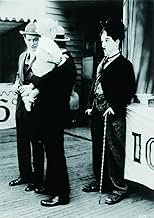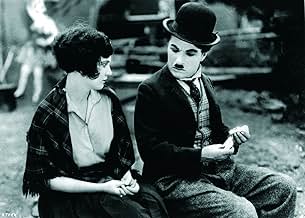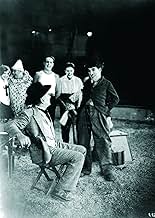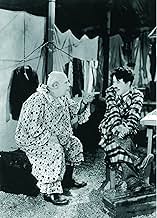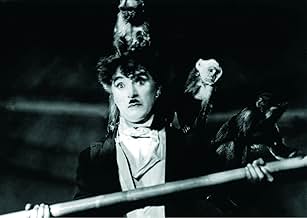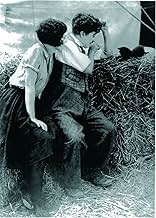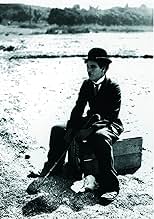The Tramp finds work and the girl of his dreams at a circus.The Tramp finds work and the girl of his dreams at a circus.The Tramp finds work and the girl of his dreams at a circus.
- Awards
- 3 wins
Charles Chaplin
- A Tramp
- (as Charlie Chaplin)
Al Ernest Garcia
- The Circus Proprietor and Ring Master
- (as Allan Garcia)
Tiny Sandford
- The Head Property Man
- (as Stanley J. Sandford)
Albert Austin
- Clown
- (uncredited)
Chester A. Bachman
- Cop
- (uncredited)
Eugene Barry
- Cop
- (uncredited)
Jack Bernard
- Man in Circus Audience
- (uncredited)
Stanley Blystone
- Cop
- (uncredited)
Heinie Conklin
- Clown
- (uncredited)
Toraichi Kono
- Man in Circus Audience
- (unconfirmed)
- (uncredited)
H.L. Kyle
- Man in Circus Audience
- (uncredited)
Betty Morrissey
- The Vanishing Lady
- (uncredited)
- Director
- Writer
- All cast & crew
- Production, box office & more at IMDbPro
Storyline
Did you know
- TriviaIn the 1969 reissue, the 80-year-old SirCharles Chaplinsang the title song.
- GoofsAfter the tramp washes the shaving cream from his face, he dries himself with a towel, but the towel never touches his face. (This is probably so that it won't mess up the stage makeup.)
- Quotes
The Circus Proprietor and Ring Master:Go ahead and be funny.
- Alternate versionsCharles Chaplinreplaced the original credits of this film when he reissued it in 1969. In their place, there is an opening scene featuringMerna Kennedyon the trapeze while Chaplin sings a song, then the image fades to the credits of that version with no cast nor technical credits.
- ConnectionsFeatured inThe Circus: Premiere(1928)
Featured review
When Charlie Chaplin first plods onto screen in The Circus, he has his back to us. Unusual for any other leading man, but Chaplin was such a legendary icon, even now when he was only making one film every few years, his mere outline was enough to announce his presence. But with such a status came a certain weariness, and The Circus is one of a number of pictures in which Chaplin lampoons the whole process that made his name.
A lot of the business in The Circus is about Chaplin's ability to be naturally comical, and the shortcomings of being an employed comedian. It's interesting how, more than any Chaplin picture that came before or after, The Circus seems to be putting us (the audience) into the little tramp's experience. There are a number of point of view shots, and often characters addressing Charlie are virtually staring into the lens, as opposed to the profile shots he usually stuck to. Even the shots in the ring do not give us the perspective of the big top crowd, and instead the camera looks in on the action from the performers' entrance. The camera is always in the sawdust and never the stalls. This is, from its very first scene, clearly a backstage movie. It may seem a subtle shift but Chaplin is certainly drawing us more to focusing on the lives of circus folk and away from thinking of the circus as entertainment. It's notable too that Chaplin's best comedy vignettes occur outside the big top.
It seems Chaplin was increasingly giving larger and more substantial roles to his leading ladies. Oddly however, while Merna Kennedy plays the most fleshed-out female lead of any Chaplin picture to date, she seems less of a focus for the camera, which barely lingers on her. From what we can see she is not bad, but she lacks the calm dignity of Edna Purviance and Georgia Hale, or at least does not get to display such a thing. More reassuringly, there is a decent-sized part for Chaplin regular Henry Bergman as an old clown. Bergman had been a comedy performer for decades, and had even worked in a real circus in his youth, so he certainly knew what this role was about. With some heartfelt facial acting amongst all his usual huffing and puffing about, it is probably his finest performance.
If The Circus is known for anything, it tends to be the very fact that it is not as well known as many of Chaplin's other features. Chaplin himself does not even mention it in his autobiography (the imaginatively titled "My autobiography" – but then again, being the legend that he is, he doesn't need a punchy title to promote his own name). But far from neglecting the work, Chaplin gave it surely his neatest and most delicate update-job when he came to overhaul all his silent features for re-release in the 60s and 70s. Unlike The Kid and A Woman of Paris, from which he cut several scenes, and The Gold Rush, which he all but butchered in 1943, The Circus is left intact. He also treats it to its own theme song, under which the opening credits are inter-cut with shots of Kennedy on the trapeze, creating the most tender and lyrical opening of all his pictures.
A lot of the business in The Circus is about Chaplin's ability to be naturally comical, and the shortcomings of being an employed comedian. It's interesting how, more than any Chaplin picture that came before or after, The Circus seems to be putting us (the audience) into the little tramp's experience. There are a number of point of view shots, and often characters addressing Charlie are virtually staring into the lens, as opposed to the profile shots he usually stuck to. Even the shots in the ring do not give us the perspective of the big top crowd, and instead the camera looks in on the action from the performers' entrance. The camera is always in the sawdust and never the stalls. This is, from its very first scene, clearly a backstage movie. It may seem a subtle shift but Chaplin is certainly drawing us more to focusing on the lives of circus folk and away from thinking of the circus as entertainment. It's notable too that Chaplin's best comedy vignettes occur outside the big top.
It seems Chaplin was increasingly giving larger and more substantial roles to his leading ladies. Oddly however, while Merna Kennedy plays the most fleshed-out female lead of any Chaplin picture to date, she seems less of a focus for the camera, which barely lingers on her. From what we can see she is not bad, but she lacks the calm dignity of Edna Purviance and Georgia Hale, or at least does not get to display such a thing. More reassuringly, there is a decent-sized part for Chaplin regular Henry Bergman as an old clown. Bergman had been a comedy performer for decades, and had even worked in a real circus in his youth, so he certainly knew what this role was about. With some heartfelt facial acting amongst all his usual huffing and puffing about, it is probably his finest performance.
If The Circus is known for anything, it tends to be the very fact that it is not as well known as many of Chaplin's other features. Chaplin himself does not even mention it in his autobiography (the imaginatively titled "My autobiography" – but then again, being the legend that he is, he doesn't need a punchy title to promote his own name). But far from neglecting the work, Chaplin gave it surely his neatest and most delicate update-job when he came to overhaul all his silent features for re-release in the 60s and 70s. Unlike The Kid and A Woman of Paris, from which he cut several scenes, and The Gold Rush, which he all but butchered in 1943, The Circus is left intact. He also treats it to its own theme song, under which the opening credits are inter-cut with shots of Kennedy on the trapeze, creating the most tender and lyrical opening of all his pictures.
Details
- Release date
- Country of origin
- Official sites
- Languages
- Also known as
- The Traveller
- Filming locations
- Glendale, California, USA(ending exterior scenes - the circus wagons depart south on Verdugo Rd. from Glenoaks Blvd.)
- Production company
- See more company credits at IMDbPro
Box office
- Budget
- $900,000 (estimated)
- Gross worldwide
- $31,718
- Runtime1hour12minutes
- Color
- Sound mix
- Aspect ratio
- 1.33: 1
Contribute to this page
Suggest an edit or add missing content


